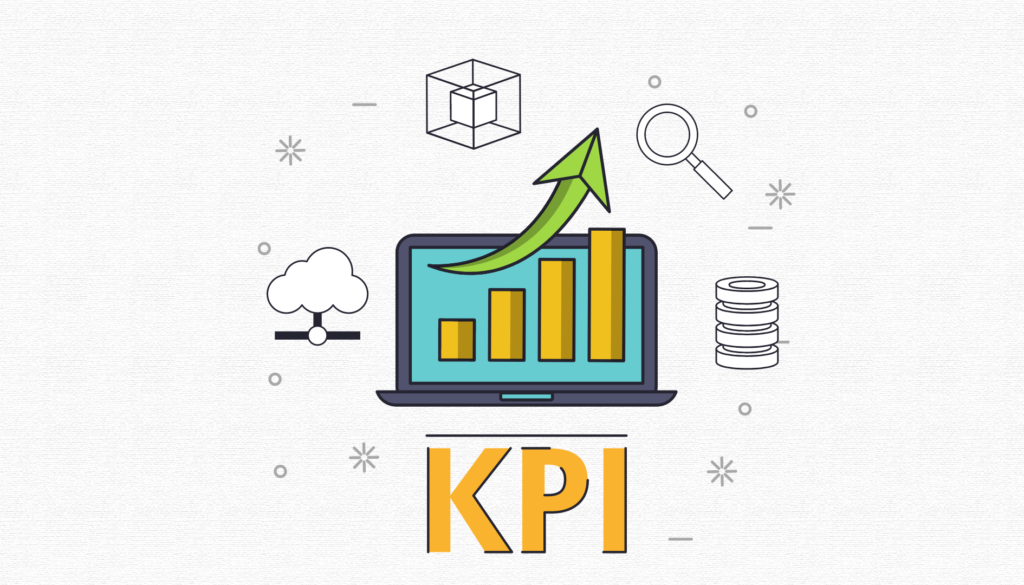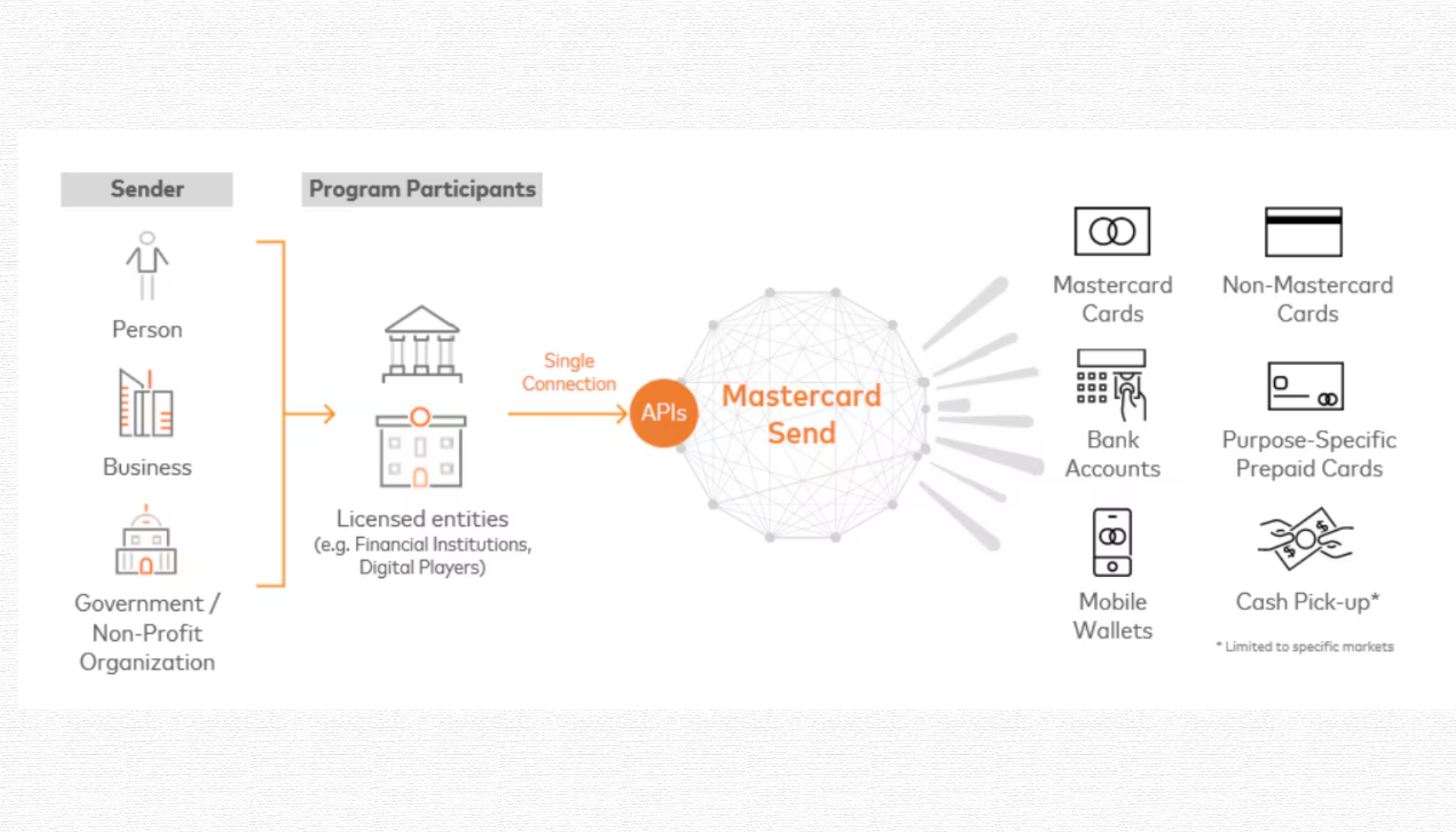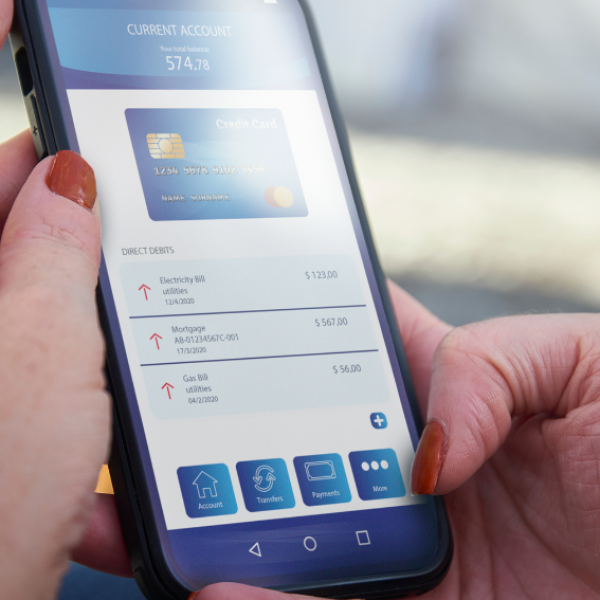Have you ever felt overwhelmed by the large amount of sales data you’re managing and puzzled by which metrics are crucial? You’re not alone. An excess of data without a clear focus can prevent sales leaders from reaching clear insights that lead to confident decisions and sustainable growth.
However, there is a straightforward way forward. To make sure you’re getting the most return on investment from your tools, teams, and customer relationships, focus on key sales performance indicators (KPIs). These should include both reliable metrics like lead conversion rates and those that gauge long-term value, such as customer and employee retention.
Below, we provide all the necessary information about sales KPIs, also pointing out some of the best practices that promote a healthy, productive, and expanding business.
Table of Contents
Understanding Sales KPIs
Sales KPIs, or Key Performance Indicators, are critical metrics that gauge the performance of a sales team about set goals and their overall impact on the business. These indicators include measures like the average number of leads generated each quarter and the rate of successful deal conversions.
In the context of sales, KPIs serve as indicators of progress toward achieving sales targets, playing a crucial role in guiding sales teams to improve their performance throughout the sales process.
Typically, sales KPIs focus on sales volumes, employee productivity, and customer interactions. They are used by individuals, teams, and entire organizations to monitor sales progress and inform strategic decisions.
Why Are Sales KPIs Essential?

Sales teams and leaders rely on sales KPIs to monitor their progress toward achieving their goals. Without these KPIs, sales representatives and managers might not have clear insights into the effectiveness of their efforts or if there’s a need for strategic adjustments. KPIs also help in identifying new trends and patterns.
Using these KPIs, sales leaders can analyze deeper to pinpoint the reasons behind certain outcomes and determine appropriate actions. For instance, if a new product is selling better than anticipated, more resources might be redirected to enhance its sales. Conversely, if a product isn’t performing well due to competitive pricing, the team might reduce prices or redirect their efforts toward other products.
Sales KPIs provide insights into both individual and team activities and performance, enabling managers to verify if team members, who may be located in different regions, are fully leveraging their capabilities to meet their objectives. Regular and detailed tracking of sales KPIs helps leaders maintain an informed perspective on the business’s trajectory.
Different Examples of Sales KPI

Here are some examples of sales KPIs, organized by category to assist you in selecting the most suitable one for your specific requirements.
Business Development KPIs
Lead Generation
Lead generation is a primary key performance indicator (KPI) for business development, focusing on both the quantity and quality of leads added to your sales pipeline. Leads are potential customers who have expressed interest in your product or service and have shared their contact information. You can acquire leads through various methods including email marketing, cold calling, events, social media, partnerships, and referrals. Generating more leads increases the potential to convert them into paying customers. However, the quality of leads is also crucial.
Quality is determined by how closely leads match your ideal customer profile, their engagement with your brand, and their readiness to make a purchase. Lead scoring systems can be used to evaluate leads based on these factors, allowing you to prioritize those with the highest potential.
Revenue
KPIs related to revenue are essential for evaluating a company’s financial stability and growth. These metrics offer insights into a business’s revenue patterns and assess the effectiveness of its growth strategies. Two important KPIs are Sales Growth and New Income Sources. Tracking the development and increase of new revenue channels is crucial for spotting opportunities in new markets or when launching products and services.
This tracking supports business diversification and growth. Likewise, observing sales growth helps companies assess the effectiveness of their marketing initiatives, sales tactics, and efforts to gain new customers. Concentrating on these revenue-related KPIs can improve companies’ financial outcomes and strategic planning.
Monthly Recurring Revenue (MRR) Growth Rate
Monthly sales growth calculates the rise or fall in your sales revenue each month. For many SaaS sales teams, tracking the monthly MRR growth rate is practical, though it can also be calculated on an annual basis.
Tracking sales growth monthly allows sales leaders to identify and respond to sales revenue trends in real time, rather than relying on retrospective reports. Setting realistic sales revenue targets for individuals and teams can motivate improved performance and ensure sales activities are coordinated.
Additionally, this KPI is useful for evaluating the success of various marketing and sales campaigns, supporting decisions based on data. An increasing MRR growth rate suggests that a company is successfully connecting with its target audience and achieving a strong market position.
Operational and Efficiency KPIs
Monitoring operational and efficiency KPIs is essential for businesses focused on optimizing their processes, improving productivity, and increasing overall efficiency. These metrics help organizations identify areas that require enhancement and implement strategies to improve operational performance. Strategic Partnership Development and Process Improvement Metrics are two critical KPIs for operational and efficiency objectives.
Strategic Partnership Development measures the number of new alliances and partnerships formed over a specific period, evaluating their impact on expanding market reach, accessing resources, and driving business growth. Process Improvement Metrics assess the effectiveness of business development processes by tracking variables such as error rates, cycle time, customer satisfaction, and cost per process. This analysis helps pinpoint bottlenecks and inefficiencies, facilitating targeted enhancements.
Churn Rate
Churn rates refer to the percentage of customers who discontinue their business with your company. This includes customers who cancel their recurring subscriptions and those whose payment methods are no longer valid. Monitoring churn rates helps you understand why customers may disengage, allowing you to identify and rectify prevalent problems.
Average Profit Margin
The Average Profit Margin is an essential financial metric that indicates the percentage of profit generated from each sale. It assesses the portion of revenue that transforms into profit after all expenses related to production and sales are paid. To calculate this margin, divide the net profit by total revenue and multiply the result by 100 to express it as a percentage. This calculation shows the share of revenue that is retained as profit after expenses.
To enhance this margin, businesses can implement strategies such as reducing costs, adding value-added services, refining pricing strategies within the sales funnel, and reevaluating the product mix. These measures aim to increase the profitability and operational efficiency of a company.
The importance of the Average Profit Margin is in its reflection of a business’s operational efficiency and financial health. It guides strategic choices related to pricing, cost control, and resource allocation, which are crucial for increasing profitability and maintaining the company’s long-term viability. Monitoring and improving profit margins are essential for a company to remain competitive, support growth, and deliver value to its stakeholders.
Market Expansion
Venturing into new markets is a key strategy for business growth. Focusing on certain KPIs is essential to tracking and evaluating the success of these initiatives. Two important KPIs for market expansion are market penetration and share of wallet.
Market penetration gauges a company’s success in entering new markets by evaluating its market share. This helps businesses determine their effectiveness in establishing a presence in new areas and evaluate their marketing efforts, sales activities, and brand visibility. Meanwhile, share of wallet measures the percentage or amount of a customer’s total expenditures captured by your business. This KPI is crucial for identifying ways to enhance customer loyalty and supports strategies to cross-sell and upsell, aiming to secure a larger share of customer spending.
Customer Acquisition Cost
In Business Development, the Customer Acquisition Cost (CAC) is a key performance indicator. It calculates the average cost incurred to gain a new customer, covering all related expenses such as commissions, salaries, marketing campaigns, tools, events, and travel costs. CAC is crucial for evaluating the efficiency and profitability of your Business Development strategy. A low CAC indicates that your revenue exceeds your Business Development expenses, enhancing your return on investment (ROI).
Likewise, a high CAC suggests excessive spending on Business Development, which can diminish your profit margins and limit growth. To reduce your CAC, consider improving your conversion processes and lead generation, utilizing partnerships and referrals, and increasing the efficiency of your Business Development activities through scaling and automation.
Improvement and Innovation KPIs
Businesses aiming to remain competitive and foster continual growth should focus on monitoring KPIs linked to improvement and innovation. These KPIs provide crucial insights into the effectiveness of innovation strategies and help promote a culture of innovation within the company. Two essential KPIs in this context are R&D Spending as a Time to Market and Percentage of Sales.
The first, Time to Market, measures the time it takes to develop a concept and bring it to market, assessing the company’s ability to quickly deliver new solutions to customers, meet market demands, and sustain a competitive advantage.
The second measures the share of sales revenue allocated to research and development, gauging the company’s dedication to innovation, the effectiveness of its R&D activities, and ensuring the availability of resources for future expansion.
Deals in the Sales Funnel
The Number of Deals in the Funnel is a key sales metric that quantifies the total number of potential sales opportunities at various stages of the sales process. This metric is vital for assessing both the size and health of the sales pipeline and for forecasting future revenue. To calculate this number, sales teams count all deals, from initial contact through to completion.
Improvement strategies for this metric include establishing precise lead qualification criteria within lead generation, effectively managing the pipeline, and enhancing the sales process. These strategies are important because the Number of Deals in the Pipeline provides insights into future revenue possibilities and impacts sales performance. Armed with this data, companies can predict outcomes with greater accuracy, distribute resources more effectively, and make strategic decisions that enable sales teams to focus their efforts better. This focus is essential for achieving consistent growth, sustaining a continuous flow of opportunities, and ultimately, increasing revenue and enhancing business success.
Sales Executive KPIs
Selecting the appropriate KPIs to monitor field sales executives effectively is crucial. Concentrating on irrelevant KPIs could result in missed sales opportunities. Therefore, it is important to align KPIs that enhance the productivity of sales representatives and are relevant to both the industry and your specific business objectives.
Location-Based Sales Volume
Sales volume measures the quantity of product units sold within a specific timeframe. By tracking this metric across different locations, managers and executives can identify which products are most popular and in which areas they perform well.
With the rise in online shopping, understanding sales volume is key to managing costs effectively. This information helps decide which products to promote more, reduce, or discontinue in certain areas.
Conversion
Visiting clients alone does not achieve objectives; the true measure of a field sales executive’s performance is their ability to convert visits into sales. The rate at which representatives transform prospects into new clients is crucial for generating KPIs. A low conversion rate may indicate that while an executive is effective at initiating contact, they might require additional support to finalize deals. Analyzing these details helps identify which representatives struggle with conversions and who might benefit from further training.
Client Relationships
The adage “The customer comes first” underscores the importance of developing and maintaining relationships with existing clients to generate KPIs within a team. Building trust is challenging. Regular contact between sales representatives and clients fosters a connection, making it easier for clients to express their concerns.
Tracking the performance of field sales executives is a significant challenge. One approach is to have your sales reps record the average number of daily interactions they have with customers. This data could help assess their effectiveness by comparing the number of interactions to the average duration of customer relationships.
Targets vs. Results
This can serve as a KPI to assess individual performance over time. Analyzing this can provide insights into the achievability of your monthly goals. Additionally, this information can serve as motivation and a training tool for sales representatives who need help to meet their targets.
Customer Lifetime Value
Customer lifetime value (CLV) is one of the most important KPIs for sales executives. CLV calculates the total revenue you anticipate generating from a customer throughout your sales lifecycle. This includes the initial purchase and any additional or subsequent purchases, cross-sells, upsells, or renewals. CLV is a critical measure of customer value and loyalty, and it determines how much you can afford to spend on acquiring and retaining customers.
A high CLV indicates that you are establishing profitable, long-term relationships with your customers, which boosts your customer retention rate and minimizes your churn rate. Likewise, a low CLV suggests that customers are leaving quickly or needing to be fully utilized, which can lead to decreased revenue and fewer growth opportunities. You can enhance your CLV by providing high-quality products and services, exceptional customer support, incentives and rewards, and fostering a sense of community and advocacy.
Average Deal Size
When assessing the performance of field sales representatives, comparing the average size of closed deals is crucial. Ensure your representatives manage their time well to effectively close valuable deals. This analysis can identify sales executives who consistently secure deals that may not be worthwhile. It can also reveal if some representatives prefer smaller, quicker deals over larger, more complex ones.
Competitor Pricing
Sales managers must monitor competitor pricing. This practice allows you to assess your competitors and guide your company’s pricing strategies. Additionally, it equips sales representatives with the necessary information to address and overcome pricing objections and make necessary price adjustments.
If your product does not offer clear advantages over competitors’ offerings but is priced five percent higher, you may encounter sales obstacles.
Follow-Up Rate
Maintaining contact after closing a deal is essential. To assess the effectiveness of follow-ups, this metric examines the frequency and consistency with which each sales representative contacts their clients over time. It provides insights into the extent of interactions that occur after the initial contact.
Sales Support KPIs
Meeting acceptance rate
The meeting acceptance rate is calculated by dividing the number of sales prospects who accept a meeting invite by the total room capacity. The occupancy rate is determined by dividing the number of individuals actually present in the room by the total room capacity.
This metric is crucial because leads who attend meetings are more likely to complete a purchase. Tracking this KPI helps gauge the monthly effectiveness of your sales funnel and typically shows a relationship with closing rates.
Average Wait Time
No one likes to wait, especially customers involved in a sales process, whether before or after a purchase. Customers often engage in activities they find more satisfying instead. When customers contact after-sales service by phone, email, or in person, it’s typically because they’re facing problems with a product that needs resolution. This initial interaction can form their primary and most impactful impression of your service, making it a key indicator of performance.
Average Wait Time is generally more straightforward to calculate for phone calls compared to emails. In phone service, the Average Wait Time is directly related to the Call Abandonment rate.
The objective is to decrease the Average Wait Time to improve service efficiency and response speed. Long wait times can cause customer irritation and lead to more call terminations. Unhappy customers are more likely to share their negative experiences on social media, harming your brand’s image and reducing the likelihood of personal recommendations, potentially losing future customers permanently.
To maintain a low metric, make sure there are enough staff to manage the volume of calls and inquiries, provide comprehensive training to equip your team to handle various issues effectively and avoid reducing staff numbers excessively, as this short-term saving might cause long-term challenges.
Volume of Tickets
The volume of calls or tickets significantly influences the average wait time for customers. Both your business and your customer support teams must track this metric. By measuring when calls or tickets peak—whether by hour, day, or month—you can identify patterns in customer contact volumes and prepare for unexpected increases. Being proactive in this analysis helps in managing your staff more effectively.
To further analyze this metric, compare the volume of calls or tickets to the total number of clients to calculate an average issue ratio per client. It’s important to monitor this key performance indicator (KPI) regularly, as a sharp increase may indicate a larger underlying problem.
Win/Loss ratio
This KPI is determined by dividing the number of successful deals by the number of unsuccessful deals. Understanding the number and timing of lost sales enables the sales support team to identify weaknesses in the sales pipeline and devise strategies to address them.
The win/loss ratio for sales support represents the total number of successful sales compared to the total number of unsuccessful sales over a defined period, such as weekly, monthly, or quarterly.
This metric does not consider the financial value of the sales lost or won, but rather counts the number of prospects who purchased the product versus those who did not. Effective win/loss ratio analysis also takes into account the sentiments of prospects and customers, identifying trends that offer insights into effective strategies and areas needing improvement. This allows for targeted enhancements to be made.
How to Choose the Right KPIs?

Selecting the appropriate Key Performance Indicators (KPIs) is crucial for effectively achieving sales and business goals. The most effective KPIs meet the SMART criteria: specific, measurable, achievable, relevant, and timely. By prioritizing these key indicators, a sales team can focus its efforts on its primary goals.
Different organizations, even those with similar products, may have varying objectives. For example, while one company might focus on broadening its market presence, another may aim to enhance its local customer base. Sales objectives are generally categorized into activity goals, which focus on actions such as increasing initial contacts with a specific buyer type, and performance goals, which target specific outcomes like boosting annual sales by a predetermined percentage.
The method involves defining a sales goal, detailing the actions planned to reach this goal, and choosing suitable KPIs to track progress.
For example, a possible objective might be to increase the number of new customers in a specific area by 12% by the close of the third quarter, by enhancing the frequency of sales calls and demonstrations in that region by 35%. Key Performance Indicators (KPIs) for this objective could include sales volume by location, number of calls, emails, proposals, and demonstrations, as well as pipeline deals from that area.
Similarly, a performance goal could be to increase sales revenue by 6% by the end of the fiscal year, aiming to boost monthly revenue by $200,000. This would be tracked using KPIs such as quota achievement, number of closed deals, and conversion rates, including metrics on average deal size and the frequency of cross-sells and upsells.
Choosing suitable goals depends on the broader sales and business strategy, as well as the performance capabilities of the sales team. Setting unrealistic revenue targets should be avoided if they do not align with the team’s current capabilities. It is also vital to consider how short-term adjustments can impact long-term results and that sales goals will differ by industry, location, and company size.
After selecting KPIs, using customer relationship management (CRM) software helps in developing dashboards that clearly display these metrics. This enables teams to monitor their progress toward goals and access up-to-date sales data efficiently.
Conclusion
Focusing on the right sales KPIs is essential for driving growth and making informed decisions. By tracking metrics like lead conversion rates, customer retention, and revenue growth, businesses can identify trends, measure performance, and implement strategic improvements. Understanding and utilizing these KPIs allow sales leaders to allocate resources effectively, optimize processes, and respond to market changes swiftly.
Implementing best practices in KPI tracking ensures that teams remain aligned with business goals, fostering a productive and sustainable growth environment. With clear insights from well-chosen KPIs, companies can maintain a competitive edge and achieve long-term success.
Frequently Asked Questions
What is Sales Volume by Location and why is it important?
Sales Volume by Location measures how many product units are sold in different geographic areas. This helps identify top-performing regions and products, revealing market trends and consumer preferences, which can guide strategic decisions on promotions or discontinuations.
How is Customer Lifetime Value (CLV) calculated and why does it matter?
CLV is the total revenue expected from a customer over their relationship with your company. It helps assess the long-term value of customer relationships, ensuring marketing and sales strategies are cost-effective. It’s calculated by summing the gross profit from the customer over time and adjusting for the time value of money.
What does the Lead-to-Sale % indicate about a company’s sales efficiency?
The Lead-to-Sale percentage shows the proportion of leads that turn into sales. It indicates the effectiveness of the sales funnel and marketing efforts. A higher percentage means a more efficient conversion process, which is key for maximizing revenue and optimizing strategies.
Why should companies track the Sales Cycle Length?
The Sales Cycle Length is the average time from first contact with a potential customer to closing a sale. Tracking this KPI helps businesses gauge the efficiency of their sales process. A shorter cycle indicates a more streamlined process, leading to increased productivity and faster revenue.










